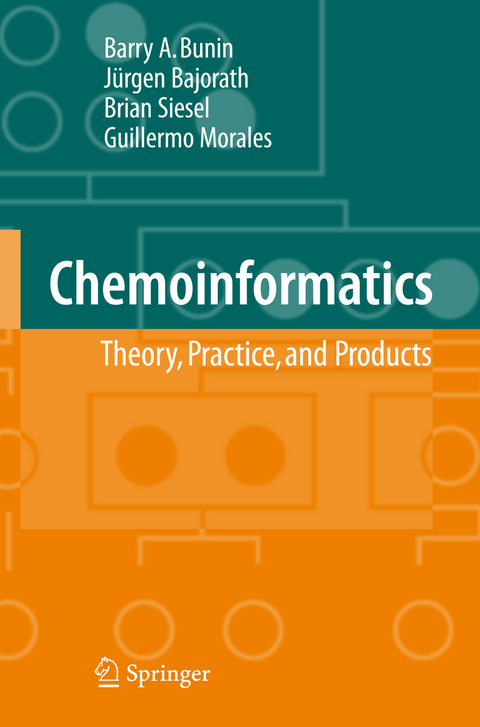
Chemoinformatics: Theory, Practice, & Products
Springer (Verlag)
978-90-481-7250-4 (ISBN)
The book also provides a summary of currently available, state-of-the-art, commercial Chemoinformatics products, with a specific focus on databases, toolkits, and modelling technologies designed for drug discovery. It will be broadly useful as a reference text for experimentalists wishing to rapidly navigate the expanding field, as well asthe more expert computational scientists wishing to stay up to date.
Theory section: Chemoinformatics theory. Chemoinformatics – what is it? Chemo- versus bio-informatics. Scientific origins. Fundamental concepts. Molecular descriptors and chemical spaces. Chemical spaces and molecular similarity.- Molecular similarity, dissimilarity, and diversity. Modification and simplification of chemical spaces. Compound classification and selection. Cluster analysis. Partitioning. Support vector machines. Similarity searching. Structural queries and graphs. Pharmacophores. Fingerprints. Machine learning methods. Genetic algorithms. Neural networks. Library design. Diverse libraries. Diversity estimation. Multi-objective design. Focused libraries. Quantitative structure-activity relationship analysis. Model building. Model evaluation. 3D-QSAR.- 4D-QSAR. Probabilistic methods. Virtual screening and compound filtering. Biologically active compounds. Virtual and high-throughput screening. Filter functions. From theory to practice. Database design. Compound selection for medicinal chemistry. Computational hit identification.- Practice and products sections: Accelrys. ACD Labs. Barnard Chemical Information Ltd. BioByte. CambridgeSoft. CAS/Scifinder. ChemAxon. Chemical Computing Group Inc. ChemInnovation Software, Inc. ChemNavigator. Chimera-Dock from UCSF. Collaborative Drug Discovery. Daylight. Eidogen-Sertanty (previously Libraria). Fujitsu Biosciences Group (previously Cache). Genego. GVK-Bio. Hypercube. IDBS. Infochem. Jubilant. Leadscope. MDL. Milano Chemometrics and QSAR Research Group. Molecular Discovery. Molecular Networks. Open Eye Scientific Software. Planaria-Software. PubChem. PyMol. RasMol and Protein Explore. Schrödinger, LLC. Scinova Technologies. Scitegic. Simulation Plus, Inc. Spotfire.-Summit PK. Symyx. TimTec. Tripos.
| Erscheint lt. Verlag | 6.11.2010 |
|---|---|
| Zusatzinfo | XI, 295 p. |
| Verlagsort | Dordrecht |
| Sprache | englisch |
| Maße | 160 x 240 mm |
| Themenwelt | Mathematik / Informatik ► Informatik ► Theorie / Studium |
| Mathematik / Informatik ► Mathematik | |
| Studium ► 1. Studienabschnitt (Vorklinik) ► Physiologie | |
| Naturwissenschaften ► Biologie ► Biochemie | |
| Naturwissenschaften ► Biologie ► Genetik / Molekularbiologie | |
| Naturwissenschaften ► Chemie ► Organische Chemie | |
| Naturwissenschaften ► Chemie ► Physikalische Chemie | |
| ISBN-10 | 90-481-7250-0 / 9048172500 |
| ISBN-13 | 978-90-481-7250-4 / 9789048172504 |
| Zustand | Neuware |
| Haben Sie eine Frage zum Produkt? |
aus dem Bereich


